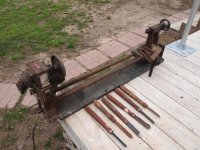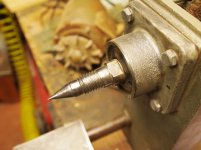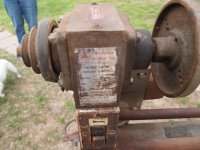I bought this heap of rust + tools for $50 because I am trying to educate myself on lathes. I have tested it and it works and I have almost cleaned it completely, but I was noticing something in the process.... How do I change the center??? Am I dumb or is this thing just made this way? I tried searching info online and there is little to none. 1 site is all I could find. The brand is Intergram and says made 1983 in USA on the label.




